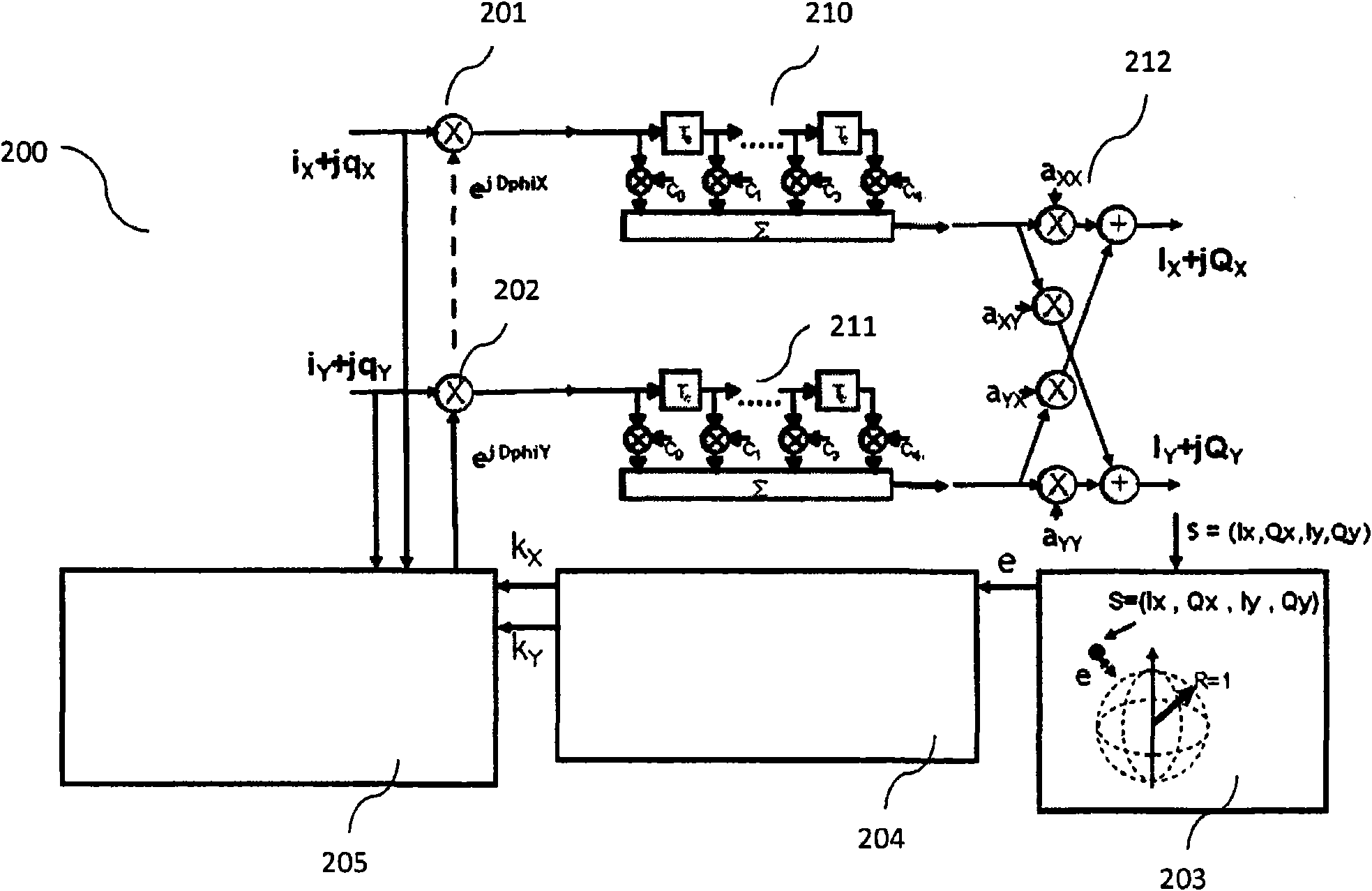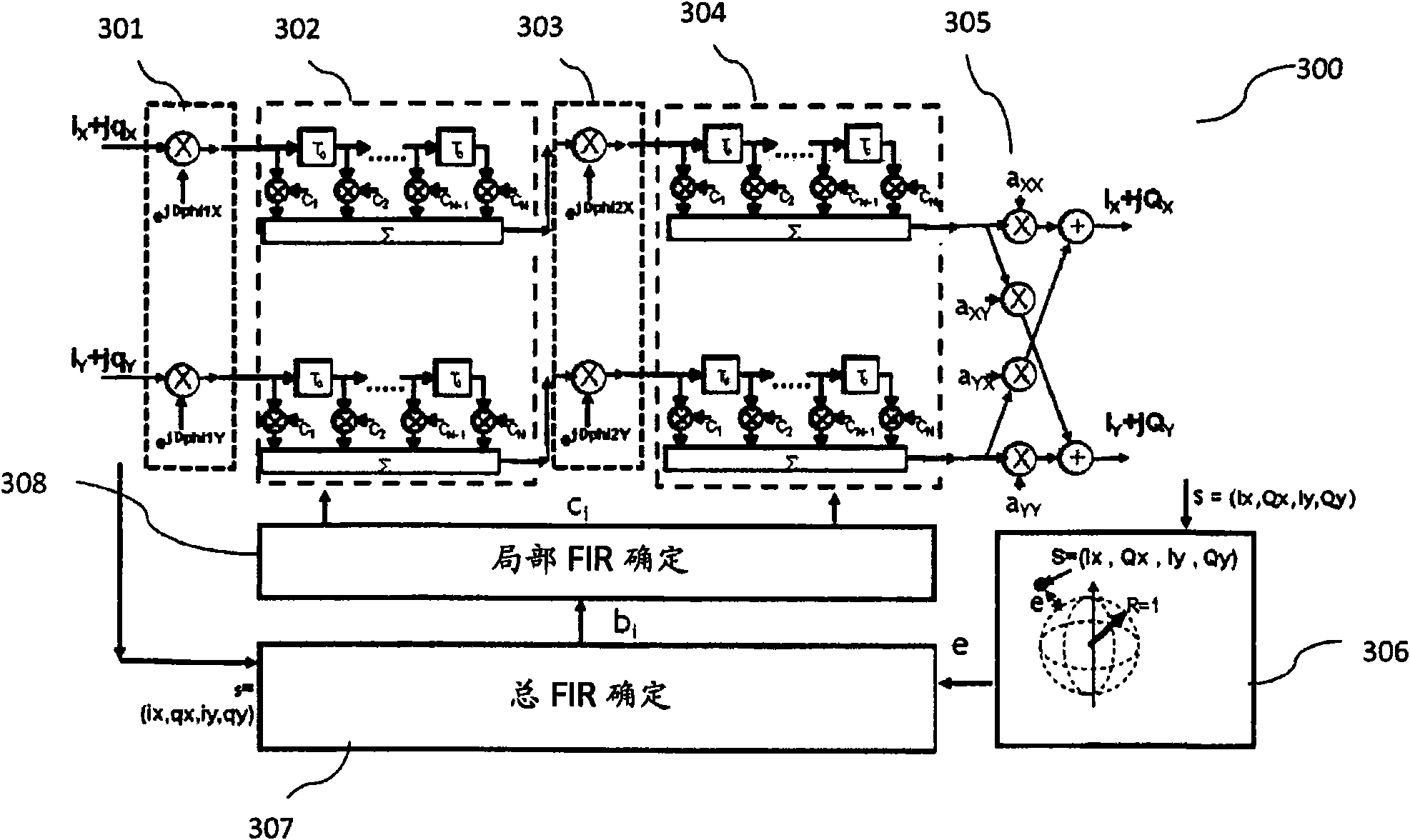Adaptive non-linearity compensation in coherent receiver
An optical receiver and a technology for receiving signals, applied in the field of optical communication, can solve problems such as reducing overall system performance
- Summary
- Abstract
- Description
- Claims
- Application Information
AI Technical Summary
Problems solved by technology
Method used
Image
Examples
Embodiment Construction
[0045] figure 1 This has already been discussed in the background section of this document.
[0046] figure 2 An embodiment of the invention is shown employing self-phase modulation compensation prior to CD equalization. In the example shown, the optical receiver comprises two CD equalizers 210, 211 and one polarization demultiplexer 212 for each signal component. In addition, the optical receiver includes separate signals for each transverse signal component i x +jq x and i y +jq y Phase compensator or phase modulator 201,202. The phase compensator uses the deviation of the signal phase, that is, the phase compensator increases or decreases the signal phase by a phase correction amount or a phase correction value. For the "x" and "y" signal components, the phase correction amount or phase correction value is respectively DphiX and DphiY.
[0047] According to one aspect of the present invention, the following formula can be used to determine the phase correction valu...
PUM
 Login to View More
Login to View More Abstract
Description
Claims
Application Information
 Login to View More
Login to View More - R&D
- Intellectual Property
- Life Sciences
- Materials
- Tech Scout
- Unparalleled Data Quality
- Higher Quality Content
- 60% Fewer Hallucinations
Browse by: Latest US Patents, China's latest patents, Technical Efficacy Thesaurus, Application Domain, Technology Topic, Popular Technical Reports.
© 2025 PatSnap. All rights reserved.Legal|Privacy policy|Modern Slavery Act Transparency Statement|Sitemap|About US| Contact US: help@patsnap.com



